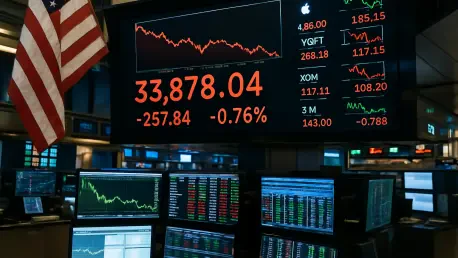
On November 13, the U.S. stock market experienced a staggering blow as the Dow Jones Industrial Average plummeted nearly 800 points, marking one of the most severe declines of the year, and this dramatic drop, coupled with significant losses in the Nasdaq Composite and S&P 500, rattled investors

As of November 2025, the financial world is gripped by a pressing question that continues to dominate discussions among analysts, investors, and policymakers: has the meteoric rise of artificial intelligence (AI) stocks morphed into a speculative bubble that threatens global markets with potential

On a pivotal day for U.S. financial markets, November 11 witnessed a striking divergence as the Dow Jones Industrial Average surged over 500 points to an unprecedented record close, while the Nasdaq Composite faltered under the burden of a struggling technology sector. This remarkable split in

In a striking development that has sent ripples through the financial markets, a prominent real estate investment trust specializing in cutting-edge life science and technology properties is under intense scrutiny for potential securities fraud. This investigation, targeting a company with a

In the heart of Dubai’s bustling financial landscape, a seismic shift is underway as ALEC Holdings PJSC, a titan in the engineering and construction sector, launches its Initial Public Offering on the Dubai Financial Market. This isn’t merely a routine listing but a transformative milestone that

In an era defined by rapid technological advancement, the staggering investments in artificial intelligence by industry titans such as Microsoft, Meta, Google, and Amazon have captured global attention, with billions funneled into infrastructure and innovation at a breathtaking pace. This